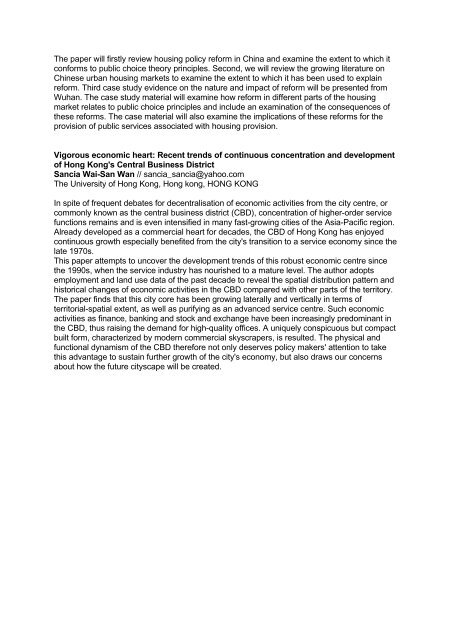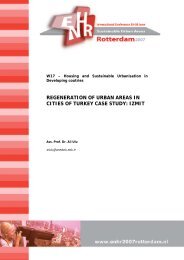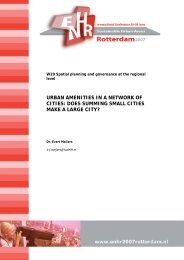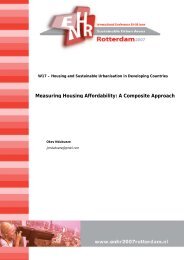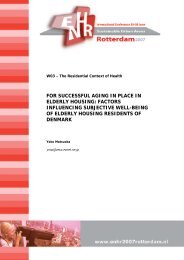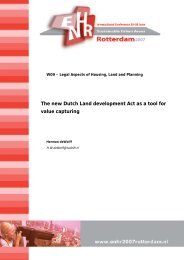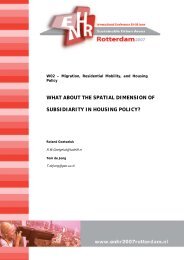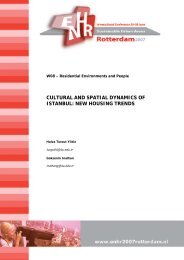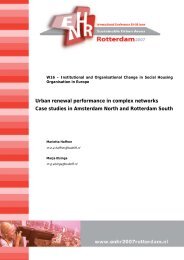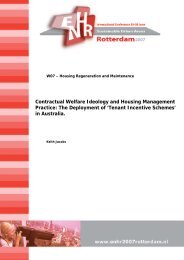Download abstracts - ENHR 2007 Rotterdam
Download abstracts - ENHR 2007 Rotterdam
Download abstracts - ENHR 2007 Rotterdam
You also want an ePaper? Increase the reach of your titles
YUMPU automatically turns print PDFs into web optimized ePapers that Google loves.
The paper will firstly review housing policy reform in China and examine the extent to which it<br />
conforms to public choice theory principles. Second, we will review the growing literature on<br />
Chinese urban housing markets to examine the extent to which it has been used to explain<br />
reform. Third case study evidence on the nature and impact of reform will be presented from<br />
Wuhan. The case study material will examine how reform in different parts of the housing<br />
market relates to public choice principles and include an examination of the consequences of<br />
these reforms. The case material will also examine the implications of these reforms for the<br />
provision of public services associated with housing provision.<br />
Vigorous economic heart: Recent trends of continuous concentration and development<br />
of Hong Kong's Central Business District<br />
Sancia Wai-San Wan // sancia_sancia@yahoo.com<br />
The University of Hong Kong, Hong kong, HONG KONG<br />
In spite of frequent debates for decentralisation of economic activities from the city centre, or<br />
commonly known as the central business district (CBD), concentration of higher-order service<br />
functions remains and is even intensified in many fast-growing cities of the Asia-Pacific region.<br />
Already developed as a commercial heart for decades, the CBD of Hong Kong has enjoyed<br />
continuous growth especially benefited from the city's transition to a service economy since the<br />
late 1970s.<br />
This paper attempts to uncover the development trends of this robust economic centre since<br />
the 1990s, when the service industry has nourished to a mature level. The author adopts<br />
employment and land use data of the past decade to reveal the spatial distribution pattern and<br />
historical changes of economic activities in the CBD compared with other parts of the territory.<br />
The paper finds that this city core has been growing laterally and vertically in terms of<br />
territorial-spatial extent, as well as purifying as an advanced service centre. Such economic<br />
activities as finance, banking and stock and exchange have been increasingly predominant in<br />
the CBD, thus raising the demand for high-quality offices. A uniquely conspicuous but compact<br />
built form, characterized by modern commercial skyscrapers, is resulted. The physical and<br />
functional dynamism of the CBD therefore not only deserves policy makers' attention to take<br />
this advantage to sustain further growth of the city's economy, but also draws our concerns<br />
about how the future cityscape will be created.


